NIL
Paul Mainieri on South Carolina struggles before LSU series | LSU
Paul Mainieri has gone through this before. He just thought that he wouldn’t have to do it again. Mainieri believed the South Carolina team he inherited had some talent, enough so that the Gamecocks could compete immediately in the toughest conference in college baseball. He didn’t think his first year at his new school would be as […]
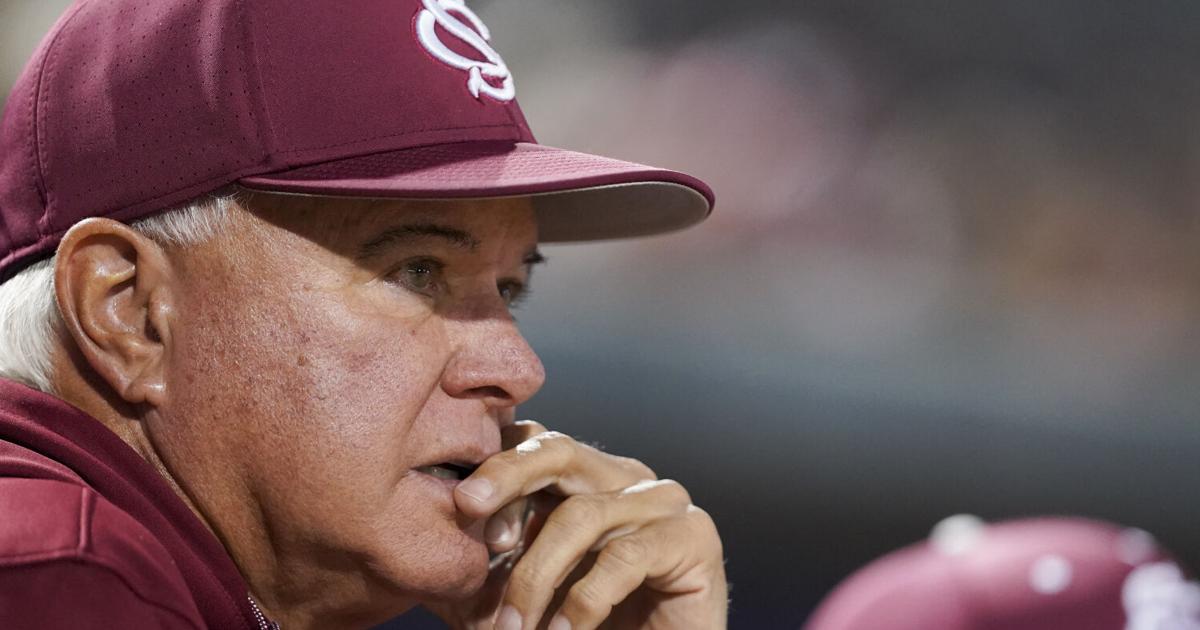
Paul Mainieri has gone through this before. He just thought that he wouldn’t have to do it again.
Mainieri believed the South Carolina team he inherited had some talent, enough so that the Gamecocks could compete immediately in the toughest conference in college baseball.
He didn’t think his first year at his new school would be as difficult as it was in 2007, his first season at LSU.
“In the fall, I thought there were a few pieces,” Mainieri told The Advocate.
But after getting swept at Clemson during nonconference play, Mainieri recognized shortcomings with his new team. They proved to be holes he couldn’t fill during Southeastern Conference play.
“The conference is just so tough. You know, it’s unforgiving,” Mainieri said. “And our schedule in particular was really difficult this year, and it exposed our limitations, where we have them.”
South Carolina holds a 5-22 record in the SEC. Mainieri’s team is 27-26 overall and has won only one series in conference play, taking down Ole Miss twice last month.
The Gamecocks are nowhere near the postseason picture heading into this weekend’s series against LSU beginning at 6 p.m. Thursday (SEC Network) in Columbia, South Carolina.
“I forgot how hard it is to win college baseball games, I guess,” Mainieri said.
Mainieri’s difficulties this season in some ways mirror what happened in 2007, when he left Notre Dame for Baton Rouge to replace Smoke Laval.
The Tigers were 29-26-1 that season and went just 12-17-1 in SEC play. Mainieri knew he’d have to take his lumps, but his confidence never wavered when it came to whether he could turn the program around.
“I told the team that, ‘This will be the last year that LSU was ever taken lightly again,’ ” Mainieri said. “And it’s a pretty bold comment, based upon what had happened in the first year. But I don’t think LSU has been taken lightly again since then.”
The Tigers went to Omaha the next season before winning their sixth national championship in 2009. But before they could find that level of success, they had to build the foundation in 2007.
That meant turning to freshmen such as Jared Mitchell, Sean Ochinko, Ryan Schimpf and Blake Dean. Dean led the Tigers in batting average and started every game.
“If we’re not going to win at a high level, at least I’m going to get these good freshmen a lot of experience and playing time, so it’ll pay off down the road,” Mainieri said. “And it certainly did with that group of guys at LSU.”
Mainieri has deployed a similar strategy at South Carolina, hoping that freshmen such as KJ Scobey and Beau Hollins can help turn around a program that won back-to-back national championships in 2010-11.
“They’ve had up-and-down moments, just like the kids did way back in the 2007 season,” Mainieri said. “But they’ve also shown what they’re capable of doing at times.”
But a lot has changed since Mainieri retired at LSU after the 2021 season, and even more about the game has evolved since 2007.
There’s NIL. There’s the transfer portal. There’s more pitchers than ever throwing 95-plus miles per hour, and more hitters than ever strong enough to consistently hit balls out of the park.
Mainieri knew these were hurdles he’d have to tackle when he decided to return to the dugout last summer, but the sheer impact of it all caught him a bit off-guard.
“The strength of the players, the velocities of the pitchers, that has been a big change since I retired four years ago,” Mainieri said. “I was telling someone the other day, we’re beating Ole Miss 5-1 in the sixth inning or something, and they bring a guy in out of the pen throwing 100 miles an hour.
“I remember when Jaden Hill touched 96 mph in a fall game, and how everybody oohed and ahhed. I remember Alex Lange’s first pitch of his career (was 95 mph) … and you could hear the buzz throughout the crowd.”
This brutal reality has, in part, led to South Carolina being third-to-last in the SEC in home runs (27) and second-to-last in ERA (9.27).
“We’ve just struggled on the mound mightily,” Mainieri said. “You just look at our statistics, and it’s easy to see that.”
Acquiring the horses necessary to compete in the SEC is the next step for Mainieri. He said he’s already hard at work on the recruiting trail for next year and beyond.
But recruiting high school players is just a slice of the pie in the modern era of college baseball. Adding immediate impact transfers with the help of sufficient NIL funds is a component of roster building that has become equally crucial in 2025.
“When I first got here last summer, we lost a lot of recruiting battles because other schools were giving a more, shall I say, appealing package to kids,” Mainieri said. “That’s the reality of the world we live in now. The schools that have a lot of money and are willing to give it to the players are getting the best players.
“We were playing Tennessee, for example, and the first baseman (Andrew Fischer) and the No. 1 starting pitcher (Liam Doyle) both played for Ole Miss last year, and both had a lot of success for Ole Miss last year. Why would they change schools from Ole Miss to Tennessee? Because they like the color orange? I mean, let’s be honest.”
Mainieri is still confident he can get South Carolina back to where it was 15 years ago. It’s a feat he already accomplished at LSU.
But he knows it’s not going to be easy.
“We just have to upgrade and get better, like we did after the first year at LSU,” Mainieri said. “And hopefully we will. We’re all working like crazy on recruiting for next year.”
NIL
Doron Lamb would’ve stayed all four years at Kentucky with NIL – with untouchable shooting records
Kentucky does not win the national championship in 2012 without Doron Lamb, the former Wildcat sharpshooter going for a game-high 22 points in the 67-59 victory over Kansas to hang banner No. 8. It was the perfect way to finish a near-perfect postseason run, the Queens native scoring in double figures all six games with […]

Kentucky does not win the national championship in 2012 without Doron Lamb, the former Wildcat sharpshooter going for a game-high 22 points in the 67-59 victory over Kansas to hang banner No. 8. It was the perfect way to finish a near-perfect postseason run, the Queens native scoring in double figures all six games with 16-plus in four of six and two 20-point outings.
Lamb was consistent, just as he was his entire career in Lexington. He averaged 12.3 points per contest in year one, 13.7 points in year two with shooting splits of 49/48/81 in 78 total games. Until Reed Sheppard came along in 2023-24, he held the all-time shooting record at Kentucky, knocking down 47.5 percent of his three-pointers on 303 attempts with 144 makes.
Thing is, he only averaged 3.9 attempts per game — 3.7 as a freshman, 4.1 as a sophomore. He was a coin-flip shooter, but didn’t get many opportunities with 1.8 conversions each time out. Keep that in mind, he says, when talking about the all-time greats in the blue and white.
“Let me tell y’all real quick. Look, y’all. Listen,” Lamb told KSR, clearly needing to get something off his chest. “Back in my era, back in my time playing basketball, I only averaged four attempts at the three-point line — but I averaged two makes. These kids now are shooting 10 threes, eight threes a game. If I would’ve done that back then, I would have averaged 20-plus. So that’s all I need to say.”
He’s got a good point. Take college basketball’s leading three-point shooter from a year ago, Belmont’s Tyler Lundblade. He knocked down 48.1 percent of his attempts — worse than Lamb’s year-one average as a Wildcat of 48.6 percent — but took 6.5 threes per game. Koby Brea may be the better example for BBN, finishing No. 9 nationally shooting 43.5 percent from deep on 5.9 attempts per contest in Lexington. Houston’s L.J. Cryer got up 7.3 three-pointers each night on 42.4 percent shooting to finish at No. 16 on his way to the national title game. Remember Lamar Wilkerson, who turned down Kentucky for Indiana in the transfer portal? 44.5 percent on 7.7 attempts at Sam Houston State, No. 7 nationally.
Could the efficiency match the volume? Lamb is almost offended by the question. Of course it would, because that’s what he does.
“For sure. If I get more shots, I’m making more shots. I’m a shot-maker,” he told KSR. “You gotta make shots to play in Coach Cal’s system because there are too many guys on the team. You only get eight, nine shots a game. That’s what I was, a shot-maker. If I’m gonna get 10 threes per night, I’m gonna make six easily.”
Lamb playing in today’s game with more shots opens the door to the dream of NIL potentially keeping him in Lexington longer than the two years he stayed, leaving as a second-round pick after the title in 2012. He was taken with the No. 42 pick as a sophomore, but would’ve happily stuck around if the price was right.
What would that price be, exactly? Considering his status as a top-30 recruit making the McDonald’s All-American Game and Jordan Brand Classic, along with the obvious shooting efficiency that put him in the Kentucky record books, it’s safe to call him a seven-figure player.
His price tag would’ve certainly gone up after scoring 22 points in the championship game, too, making the opportunity too good to pass up. The two years we saw of Lamb in Lexington would have been four.
“Me coming in as a McDonald’s All-American? I would have needed a million dollars, minimum,” he said. “These kids are getting a million dollars to average three points; it’s crazy. I would’ve been a millionaire easily. I would have stayed, I ain’t gonna lie. After one championship, I would have stayed because I would have gotten a big bag. I would have stayed in college.”
Knowing what it would have meant to his legacy as a hooper, he wishes that’s how things unfolded.
“I would’ve still had records today — three-point records, points. I would have had a lot of records,” Lamb told KSR. “I wish I had done four years.”
D-Lamb could’ve been eating a whole lot more and sleeping a whole lot less in blue and white.
NIL
Argument over ‘valid business purpose’ for NIL collectives threatens college sports settlement
Terms of the House settlement allow schools to make the payments now but keep the idea of outside payments from collectives, which have to be approved by the CSC if they are worth $600 or more. The CSC, in its letter last week, explained that if a collective reaches a deal, for instance, for an […]

Terms of the House settlement allow schools to make the payments now but keep the idea of outside payments from collectives, which have to be approved by the CSC if they are worth $600 or more.
The CSC, in its letter last week, explained that if a collective reaches a deal, for instance, for an athlete to appear on behalf of the collective, which charges an admission fee, that collective does not have a ”valid business purpose” because the purpose of the event is to raise money to pay athletes, not to provide goods or services available to the general public for profit.
Another example of a disallowed deal was one an athlete makes to sell merchandise to raise money to pay that player because, the CSC guidance said, the purpose of ”selling merchandise is to raise money to pay that student-athlete and potentially other student-athletes at a particular school or schools, which is not a valid business purpose.”
Kessler’s letter notes that the ”valid business purpose” rule was designed to ensure athletes were not simply being paid to play, and did not prohibit NIL collectives from paying athletes for the type of deals described above.
To prevent those payments ”would be to create a new prohibition on payments by a NIL collective that is not provided for or contemplated by the Settlement Agreement, causing injury to the class members who should be free to receive those payments,” Kessler wrote.
NIL
Can Purdue Compete in the NIL Era Under Head Coach Barry Odom?
Purdue is officially less than two months away from the 2025 season and the start of Barry Odom’s head coaching tenure in West Lafayette. Odom turned around a struggling UNLV program and, while the task at Purdue may be steeper, he’s shown he can bring success to places that need a rebuild. His time at […]
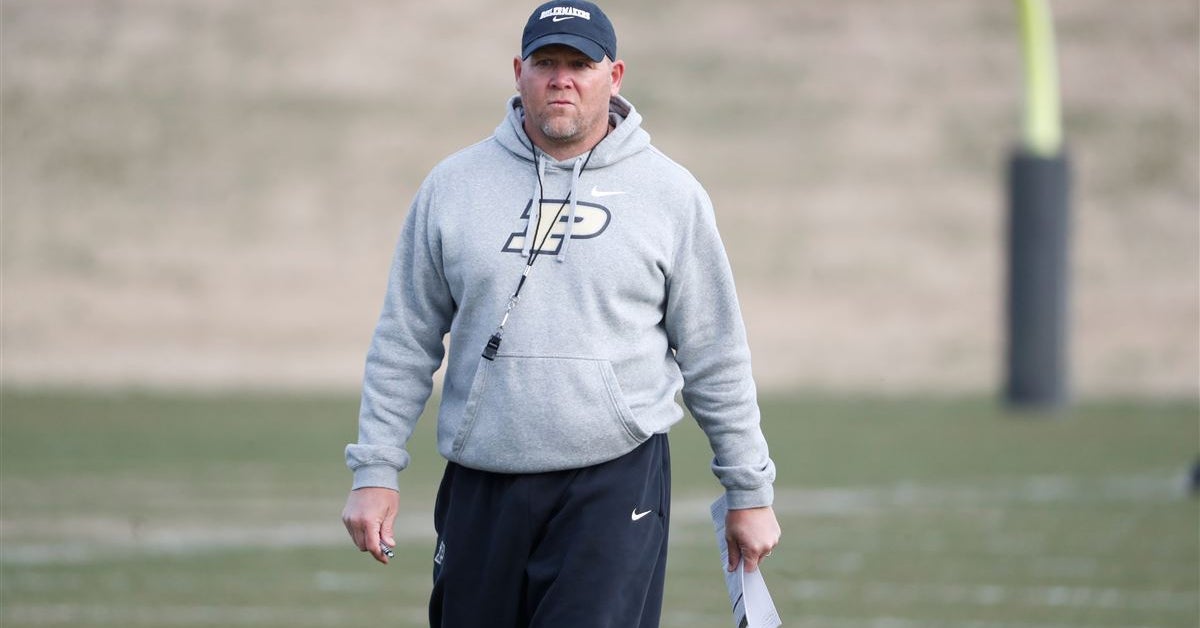
Purdue is officially less than two months away from the 2025 season and the start of Barry Odom’s head coaching tenure in West Lafayette. Odom turned around a struggling UNLV program and, while the task at Purdue may be steeper, he’s shown he can bring success to places that need a rebuild. His time at Missouri was average, but college football looks very different now—especially with the impact of NIL.
At media days across the country, coaches like Deion Sanders made it clear that winning is tied directly to money. Odom won’t have the same resources as programs like Ohio State or Michigan, but he wants to build a hard-nosed team that can compete regardless of recruiting stars or spending.
Purdue hasn’t recruited well in the NIL era, and the 1-11 record reflects that. While underdog stories are easy to root for, the truth is money matters. With the recent House vs. NCAA settlement, schools can now pay players directly via a $20.5 million revenue-sharing cap. Following the ruling, Purdue Athletic Director Mike Bobinski went on the record and clarified that the football program would receive less than the industry-standard 75% of allocated resources, this disadvantage being just another hurdle for Barry Odom to jump in his new job.
Odom acknowledged how much the game has changed in a June press conference. “We’ve changed more rule wise in the last two years than we have in the last twenty-five, and I believe that. But I also know that if you don’t adjust or adapt, you get left behind.” Coaches have always had to evolve, but Odom’s challenge is rebuilding while navigating a landscape most coaches have never seen.
Despite ranking just 47th in the 2025 transfer team ratings via 247Sports, Odom quietly retooled the roster. He focused heavily on the trenches, landing linemen like Bradyn Joiner from Auburn and Marc Nave Jr. from Kentucky. Building a strong front is part of the identity he’s trying to establish.
Odom also brings back a familiar face at quarterback in an interesting situation. Ryan Browne transferred to North Carolina to play under new head coach Bill Belichick, one of the best talent evaluators of all time, who clearly saw potential in Browne. He wasn’t the only quarterback Belichick brought in however, and a crowded room pushed him back to Purdue in pursuit of a starting spot.
Despite a dramatic offseason, Browne has the tools to be a solid Big Ten quarterback and should take over as the starter this season. He’s in a similar position to Odom as both are trying to prove they belong as consistent contenders in the conference. The original transfer seems to be water under the bridge now, with everyone in the program recognizing the redshirt sophomore as a key piece of Purdue’s rebuild.
Purdue doesn’t need a bowl game this year, but it needs to be a consistent bowl team in the near future. The program has history, and fans want to feel like it’s heading somewhere again. Whether Odom is the right guy to lead that charge is still uncertain, and he’s been honest about his own discomfort with where college football is headed. “I can’t say that I agree with everything that we’re doing now in college football, but that’s what the rules are. I’ve had to change my traditionalist thinking. It doesn’t really matter what I believe in, they didn’t ask me to write the rules.”
He’s right. If Purdue wants to compete, it can’t just be on the coaching staff. The administration has to be just as invested. What happened on the field last year wasn’t just on Ryan Walters. Odom appears to be fully bought in, but the athletic department needs to be as well. Purdue won’t ever spend like the top programs, but that doesn’t mean it can’t compete with a smart, balanced roster.
Odom has a task on his hands, but this is the same coach who turned a 10-loss UNLV team into back-to-back bowl appearances, finishing 11-2 in 2024 with a top-20 AP ranking. UNLV isn’t the same stage as the Big Ten, but Odom did exactly what he’ll be asked to do at Purdue: rebuild a struggling program and make it competitive. The Purdue job was attractive to him, and he genuinely seems locked in on turning things around.
While Odom doesn’t have the on-paper resources that Curt Cignetti had when he took over at Indiana last year, the now in-state rival laid out a blueprint for how to revive a program from the bottom. Indiana and Notre Dame are slowly cementing themselves as the standard for football in the state, but Odom has a chance to change that. He may not replicate the exact success Cignetti had at Indiana last season, but he does need to follow a style that clearly works in today’s college football landscape.
It wasn’t that long ago Purdue was in the Big Ten Championship. That game should have been a launching point, but the program hasn’t matched it since. I expect this year’s team to be better than expected. Odom’s group is under the radar, but fun, and that’s more than enough for most fans in year one. He isn’t expected to outspend college football’s giants. He’s expected to bring structure and identity.
Can Purdue compete in the NIL era under Barry Odom? We’re about to find out.
NIL
The new group policing NIL payments has left collectives little choice but to sue for their survival
The College Sports Commission was born from a federal class action lawsuit. The CSC’s first mass communication to the schools it serves likely will inspire even more lawsuits. Last week, the CSC — the organization created by defendant conferences in the wake of the House v. NCAA settlement to police third-party name, image and likeness […]


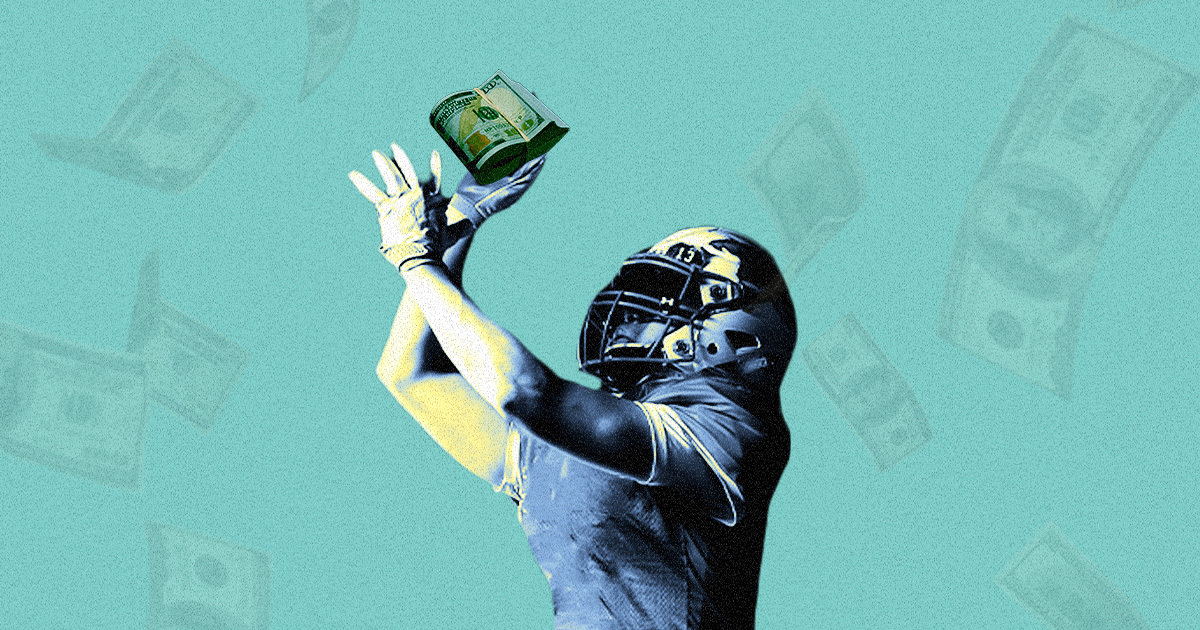
The College Sports Commission was born from a federal class action lawsuit. The CSC’s first mass communication to the schools it serves likely will inspire even more lawsuits.
Last week, the CSC — the organization created by defendant conferences in the wake of the House v. NCAA settlement to police third-party name, image and likeness deals — issued guidance to schools regarding which third-party deals between athletes and third parties will pass muster and which will be denied. In the process, the CSC quite clearly defined the class that will try to sue the CSC either out of existence or into irrelevance.
NIL collectives may have no choice but to sue, because if the guidance stands, most of them would go extinct. In the memo sent to schools, the CSC offered an example of a deal that would get denied. The example stated that a collective couldn’t pay a player to appear at a meet-and-greet to which the collective charged fans admission.
This is viewed by the CSC as an attempted circumvention of the $20.5 million-per-school-per-year revenue share cap established by the settlement. But only the schools and players are bound by the terms of the settlement, which requires them to pursue arbitration should they disagree with a CSC decision.
Collectives and their operators aren’t party to the settlement. If they have an issue, they’d have to sue. And it seems if they want to stay in business, that’s what they’ll have to do.
Here’s what the collectives probably would argue. Plenty of businesses charge fans to meet famous people. Every autograph show in the history of the planet is an example. Based on this, Comic-Con and its various spinoffs would be out of luck if its stars were college athletes and not actors whose projects are beloved by nerds. Concert promoters also charge for meet-and-greets, but that practice would apparently fail to satisfy the CSC as a legitimate business endeavor.
Are these particular college athlete meet-and-greets staged to create a reason to give money to the players? Absolutely. The collectives aren’t hiding that. Fans and donors are paying collectives because they would like to financially support the players — just as a die-hard fan of a band wants to support the members by buying a special wristband to get backstage.
“I was surprised to see that the CSC thought they had the authority to put dozens of businesses out of business simply because they had a valid business purpose the CSC didn’t like,” said Arkansas-based attorney Tom Mars, who has represented multiple collectives through the years. In the highest profile case, Mars represented Tennessee-adjacent collective Spyre Sports when the NCAA was investigating Spyre’s deal with then-Volunteers quarterback Nico Iamaleava.
House plaintiffs attorneys Jeffrey Kessler and Steve Berman sent a letter to the CSC on Friday demanding that the guidance be retracted lest they challenge it to the special master assigned to manage the settlement. But Kessler and Berman wrote on behalf of the athletes who were their clients. The collectives themselves also may feel they need to take action because as it stands, the CSC guidance represents an existential threat.
It sounds as if Mars — who also has represented multiple coaches against the NCAA — would happy to represent collectives that feel aggrieved. “What’s next?” he said. “The CSC declaring that Budweiser doesn’t have a valid business purpose because Bud Light is too woke?”
If you’re wondering how Mars might present a case, he’s offering clues on social media.
Those who run college sports insist they must have some ability to rein in athlete compensation. “I’ve asked repeatedly in conference meetings, if we don’t want any limits or any structure, just let me know,” SEC commissioner Greg Sankey said Monday at SEC media days. “Then the phone stops ringing. But over and over again in meeting rooms, the desire has been for a structure. So we are implementing a structure even with some bumps in the road. We need to commit to that structure. We need to be willing to make that structure work.”
To that end, commissioners have tried to lobby the U.S. Congress to effectively memorialize the House settlement as federal law and give the schools an antitrust exemption that would keep them for being sued for the violations of the Sherman Act that have plagued the industry in recent years. On Monday, a bipartisan bill was introduced in the House of Representatives that would do just that. Such a bill might get out of committee and pass in the House, but getting the 60 votes required to break a filibuster in the Senate could be a significant challenge.
“I remember School House Rock, right?” Sankey joked Monday. “I’m just a bill, yeah, I’m only a bill, I’m sitting here on Capitol Hill. So congratulations; we have a bill on Capitol Hill that is sitting and requires a great deal of more work.”
Sankey understands a federal law that grants all of his desires — as the one just introduced does — is probably unlikely. And the commissioners’ dream bill already has powerful enemies. The players associations the represent players in the NFL, NBA, NHL, MLS and Major League Baseball released a joint statement Monday urging representatives to reject any request for an antitrust exemption from colleges. Presumably, these unions don’t want their leagues to think they can go running to Congress for a free pass to violate the Sherman Act.
Others have suggested that legislative relief is a pipe dream and collective bargaining with the athletes is the only legal way to establish a salary cap that wouldn’t be obliterated by lawsuits. Tennessee athletic director Danny White unveiled his plan for collective bargaining last month. Last week, Oklahoma State coach Mike Gundy said schools need to “admit the players are employees” so collective bargaining can begin.
Monday, SEC coaches were peppered with questions about the House settlement, the revenue sharing cap and third-party deals. Ole Miss coach Lane Kiffin probably gave the most currently accurate answer when asked about a potential salary cap.
“We’ve tried to follow the guidelines because that’s what we were told we needed to do,” Kiffin said. “I’m not saying they’re wrong for doing it. I’m not calling anybody out. If the system isn’t solid enough to prevent that, then we really don’t have a system.”
The leaders of college sports thought they had a system, but two weeks in, that system is about to be beset from all sides.
NIL
Kai Trump joins Livvy Dunne, Travis Kelce with new NIL deal
Future University of Miami golfer Kai Trump still has another year of high school before she hits the college links, but is already one of the most followed and prolific student-athletes in NIL. President Trump’s granddaugher has partnered with the likes of TaylorMade and Leaf Trading Cards this past year and has now added a […]
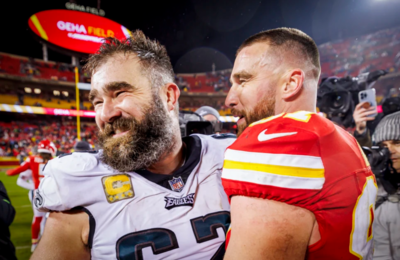
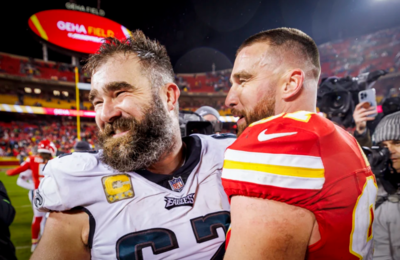
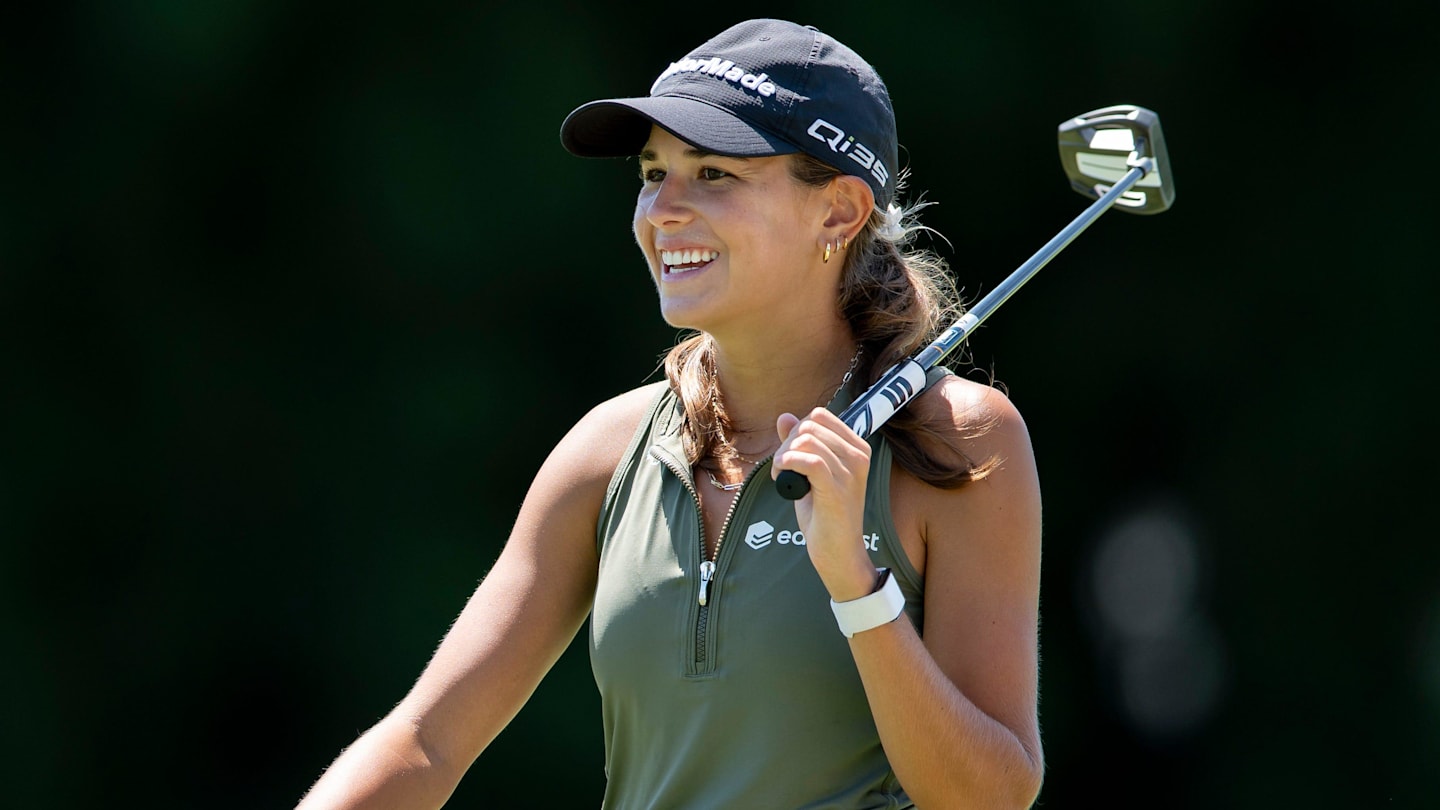
Future University of Miami golfer Kai Trump still has another year of high school before she hits the college links, but is already one of the most followed and prolific student-athletes in NIL. President Trump’s granddaugher has partnered with the likes of TaylorMade and Leaf Trading Cards this past year and has now added a star-studded energy drink to her growing portfolio.
Trump joins NIL trailblazer and now former LSU gymnast Livvy Dunne and Kansas City Chiefs star tight end Travis Kelce as brand ambassadors and equity partners of Accelerator Active Energy. Quickly building a social media following – including more than six million followers across TikTok, Instagram and YouTube – she has the building blocks in place to continue her NIL success at the next level.
“I love energy drinks,” Trump told NIL Daily on SI about her Accelerator deal. “They fit to my daily lifestyle pretty well and honestly, it was a very natural partnership. I just can’t wait to continue working with them and the team is amazing. The product fits my daily lifestyle very well.”
To tee-off the announcement, Accelerator and Trump released a video across social media featuring a presidential-themed speech where she reveals her partnership and investment in the brand. Beyond the partnership, Trump is excited about the chance to learn from and collaborate with Dunne and Kelce, two iconic figures across the sports and pop culture landscapes.
“I’m really looking forward to just like meeting them in person, picking their brains,” Trump added. “I met Livvy actually the other day at the airport – funny enough – and she was super nice. They’re both amazing athletes and obviously a lot of people look up to them. I’m very lucky and excited to be alongside them working with the Accelerator, so I’m looking forward to it.”
Like Arch Manning, Bronny James and Charlie Woods before her, Trump has the added pressure of life in the public eye as a high school student-athlete with a very famous surname, but is focused on school and honing her craft on the golf course ahead of entering college in the Fall of 2026.
“I’m very fortunate to have the opportunity to do NIL deals and I’m looking forward to just having authentic partnerships in the future,” she continued. I’m very thankful for everything that I have and very grateful. I try not to think too much about NIL and how much money I could possibly make. I’m more focused honestly on golf, my game and planning for Miami.
Accelerator recently launched a signature flavor for Dunne, who established her own Livvy Fund to partner with other LSU female athletes in the NIL space as well.
In addition to Trump, Dunne and Kelce, Accelerator counts soccer star and world champion Lindsey Heaps, top-10-ranked professional tennis star Paula Badosa and baseball rising star and world champion Evan Carter as brand ambassadors.
NIL
Argument over ‘valid buisiness purpose’ for NIL collectives threatens college sports settlement
Less than two weeks after terms of a multibillion-dollar college sports settlement went into effect, friction erupted over the definition of a “valid business purpose” that collectives making name, image likeness payments to players are supposed to have. The new College Sports Commission sent a letter to athletic directors last week saying it was rejecting […]
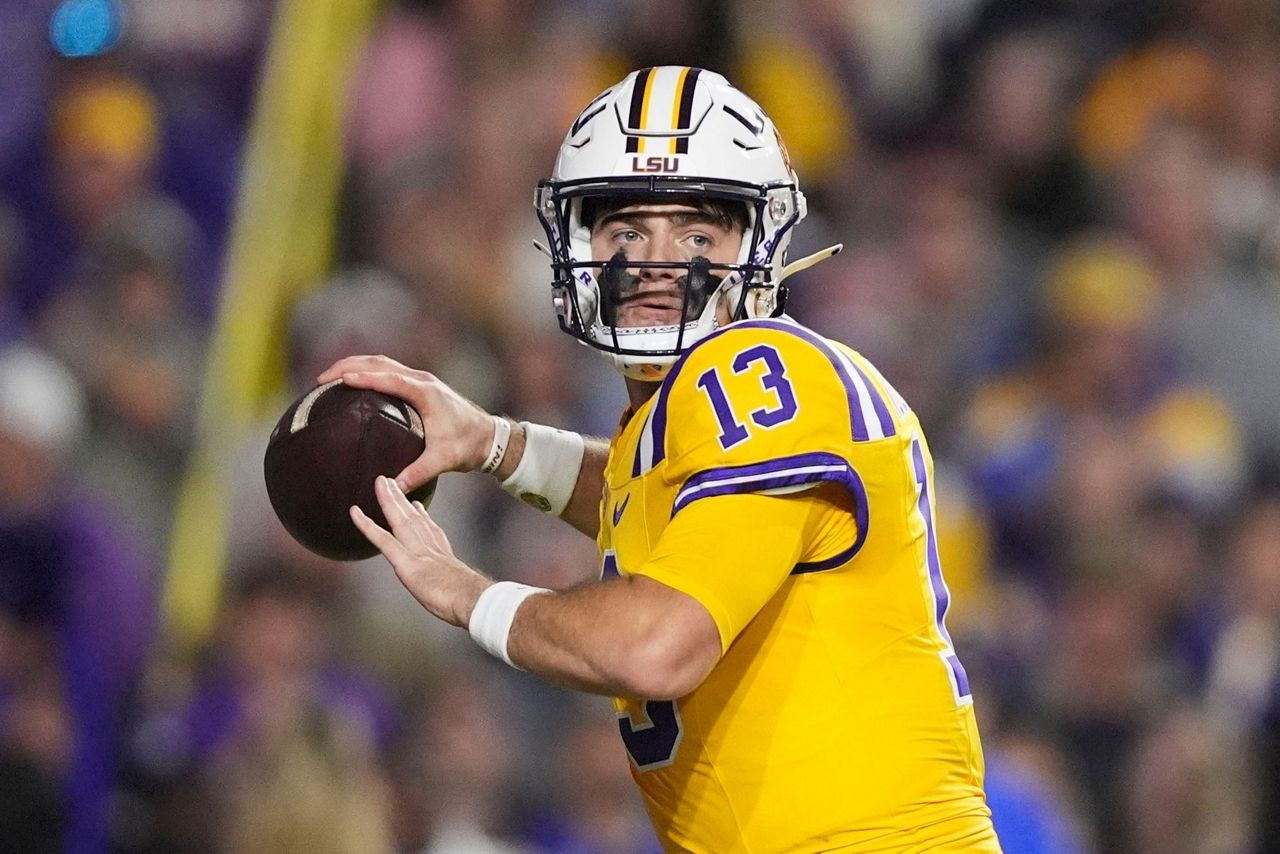
Less than two weeks after terms of a multibillion-dollar college sports settlement went into effect, friction erupted over the definition of a “valid business purpose” that collectives making name, image likeness payments to players are supposed to have.
The new College Sports Commission sent a letter to athletic directors last week saying it was rejecting deals in which players were receiving money from collectives that were created solely to pay them and don’t provide goods or services to the general public for profit.
A lead attorney for the players responded by saying those instructions went against settlement terms and asking the CSC to rescind the guidance.
“This process is undermined when the CSC goes off the reservation and issues directions to the schools that are not consistent with the Settlement Agreement terms,” attorney Jeffrey Kessler wrote to NCAA outside counsel Rakesh Kilaru in a letter obtained by The Associated Press.
Yahoo Sports first reported details of the letter, in which Kessler threatens to take the issue to a judge assigned with resolving disputes involved in the settlement.
Kessler told AP his firm was not commenting on the contents of the letter, and Kilaru did not immediately respond to AP’s request for a comment.
Yahoo quoted a CSC spokesman as saying the parties are working to resolve differences and that “the guidance issued by the College Sports Commission … is entirely consistent with the House settlement and the rules that have been agreed upon with class counsel.”
When NIL payments became allowed in 2021, boosters formed so-called “collectives” that were closely tied to universities to work out contracts with the players, who still weren’t allowed to be paid directly by the schools.
Terms of the House settlement allow schools to make the payments now, but keep the idea of outside payments from collectives, which have to be approved by the CSC if they are worth $600 or more.
The CSC, in its letter last week, explained that if a collective reaches a deal, for instance, for an athlete to appear on behalf of the collective, which charges an admission fee, that collective does not have a “valid business purpose” because the purpose of the event is to raise money to pay athletes, not to provide goods or services available to the general public for profit.
Another example of a disallowed deal was one an athlete makes to sell merchandise to raise money to pay that player because, the CSC guidance said, the purpose of “selling merchandise is to raise money to pay that student-athlete and potentially other student-athletes at a particular school or schools, which is not a valid business purpose.”
Kessler’s letter notes that the “valid business purpose” rule was designed to ensure athletes were not simply being paid to play, and did not prohibit NIL collectives from paying athletes for the type of deals described above.
To prevent those payments “would be to create a new prohibition on payments by a NIL collective that is not provided for or contemplated by the Settlement Agreement, causing injury to the class members who should be free to receive those payments,” Kessler wrote.
___
AP college sports: https://apnews.com/hub/college-sports
Copyright 2025 The Associated Press. All rights reserved. This material may not be published, broadcast, rewritten or redistributed without permission.
-

 Technology3 weeks ago
Technology3 weeks agoPet fitness and wellness trends for a healthier and happier dog
-

 College Sports3 weeks ago
College Sports3 weeks agoWAC to Rebrand to UAC, Add Five New Members in 2026
-

 College Sports3 weeks ago
College Sports3 weeks agoA new era of Dickinson hockey begins behind the bench – The Dickinson Press
-

 Motorsports2 weeks ago
Motorsports2 weeks agoWhy Cosmetics are Making Up for Lost Time in Women’s Sports
-

 Health3 weeks ago
Health3 weeks agoFlorida assault survivor shares hope for change with new mental health law
-

 Motorsports2 weeks ago
Motorsports2 weeks agoTeam Penske names new leadership
-

 Sports3 weeks ago
Sports3 weeks agoHow to Market FAST Sports Content to New Audiences
-

 Sports6 days ago
Sports6 days agoNew 'Bosch' spin
-

 Motorsports3 weeks ago
Motorsports3 weeks agoNASCAR This Week – Patriot Publishing LLC
-

 Youtube2 weeks ago
Youtube2 weeks agoBREAKING: NBA MVP Shai Gilgeous-Alexander signs the RICHEST annual salary in league history













 (via @arenasporttv/TT)
(via @arenasporttv/TT)

















